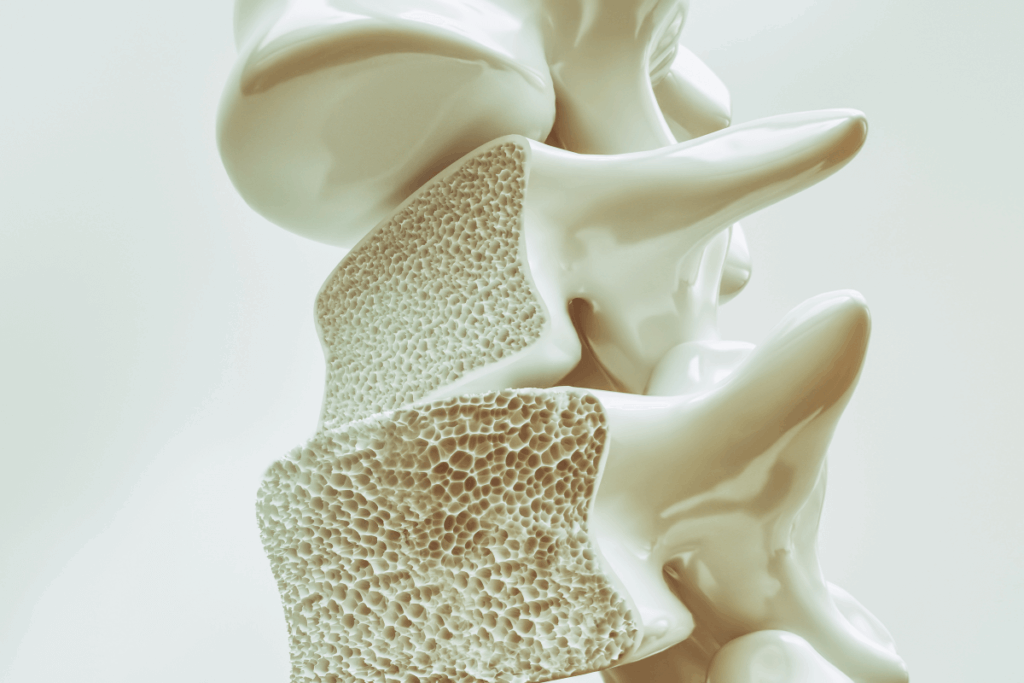
Osteoporotic vertebral fractures (OVFs) are the most common type of fragile fracture and can lead to chronic back pain, reduced daily functioning, and a lower overall quality of life if left untreated. Although complex cases may require surgical intervention, challenges such as loss of correction and implant failure persist, and no universally accepted standard procedure exists. Osteoporotic bone is thin and fragile, making it prone to structural collapse and defect formation, which can result in re-collapse even after reduction.
This has driven an increasing interest in regenerative therapies using bone mesenchymal stem cells (BMSCs) and adipose-derived stem cells (ADSCs). BMSCs exhibit high osteogenic potential, although they are difficult to isolate in patients with osteoporosis. In contrast, ADSCs can be more readily harvested through local anesthesia and sustained in proliferative as well as osteogenic capacity even in elderly patients. There is growing evidence that pre-differentiating ADSC and forming ADSC spheroids can improve bone regeneration. Nevertheless, there are limited studies that have explored the use of ADSCs in OVF treatment in animal models. This study assessed the possibility of using scaffolds composed of ADSC bone differentiated spheroids combined with β-tricalcium phosphate (β-TCP) scaffolds to stimulate the regeneration of the vertebral body in a rat OVF model.
A total of 33 rats were utilized, with osteoporosis induced through ovariectomy and vertebral defects being induced at L4 and L5. The rats were divided into three (n = 11 each) categories: osteogenic ADSC spheroids, undifferentiated ADSC spheroids, and β-TCP alone. ADSCs were spheroidized and incorporated with β-TCP scaffolds. Bone regeneration was assessed after four weeks and eight weeks using micro-CT, histological analysis, and biomechanical testing, while in vitro experiments estimated cellular behaviour and gene expression.
The osteogenic spheroid group demonstrated significantly greater bone mass, improved fusion scores, and enhanced mechanical strength compared with the β-TCP control group. Histological analysis showed increased formation of new bones and increased incorporation of β-TCP. There was an up-regulation of osteogenic markers, including alkaline phosphatase (ALP), osteocalcin (OCN), and runt-related transcription factor 2 (Runx2), and regenerative factors such as bone morphogenetic protein 7 (BMP-7), insulin-like growth factor 1 (IGF-1), hepatocyte growth factor 1 (HGF-1), and octamer-binding transcription factor 4 (Oct4). Reduced apoptosis and increased viability of ADSC at the repair location were also established. These findings suggest that ADSCs support both paracrine and direct osteogenic activity, each contributing to bone repair.
This study is the first to demonstrate the therapeutic potential of ADSC bone-differentiated spheroids in an OVF animal model using a simple preparation method that combines osteogenic differentiation with spheroid formation through the hanging-drop technique. The researchers also developed a new bone fusion rating system for rat vertebral bodies, providing high reproducibility and objective assessment via micro-CT. GFP-tagged ADSCs revealed that transplanted cells localized around the scaffold and contributed to healing. BMP-7, IGF-1, HGF-1, and Oct4 upregulation indicate the use of paracrine signalling, whereas ALP, OCN, and Runx2 upregulation indicate direct bone formation. The osteogenic spheroids also suppressed apoptosis more effectively, further enhancing bone repair.
These findings suggest that ADSC spheroids can accelerate early-stage bone regeneration and hold potential as a clinical treatment option for OVFs. Despite limitations, including differences between rat and human vertebrae, limited long-term safety data, and the need for protein-level confirmation, the results suggest a promising direction for developing regenerative therapies. Future studies may establish ADSC bone differentiated spheroids as a novel approach for minimizing deformities and non-union in OVFs.
References: Sawada Y, Takahashi S, Orita K, et al. Development of a new treatment for osteoporotic vertebral fractures using adipose-derived stem cell spheroids. Bone Joint Res. 2025;14(10):915-926. doi:10.1302/2046-3758.1410.BJR-2025-0092.R1











